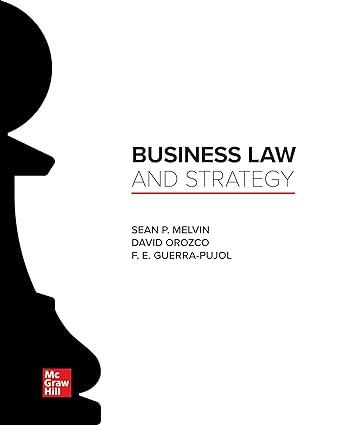In the landmark case of Brown v. Board of Education, 347 U.S. 483 (1954) (Brown I), the
Question:
In the landmark case of Brown v. Board of Education, 347 U.S. 483 (1954)
(Brown I), the U.S. Supreme Court declared that racial segregation in public schools was a violation of the Equal Protection Clause of the Fourteenth Amendment. Many school districts, however, refused to comply with the Supreme Court’s decision. The following year, in Brown v. Board of Education, 394 U.S. 294 (1955) (Brown II), the Supreme Court declared that the process of desegregation should occur “with all deliberate speed,” but the Supreme Court did not set a firm deadline or impose any specific penalties for noncompliance with its landmark 1954 decision.
CASE QUESTIONS 1. Why didn’t the Supreme Court set a deadline or impose any penalties for noncompliance with its landmark desegregation decision?
2. In your opinion, does the Equal Protection Clause prohibit classifications on the basis of sexual orientation or gender identification?
Step by Step Answer:

Business Law And Strategy
ISBN: 9780077614683
1st Edition
Authors: Sean Melvin, David Orozco, F E Guerra Pujol





